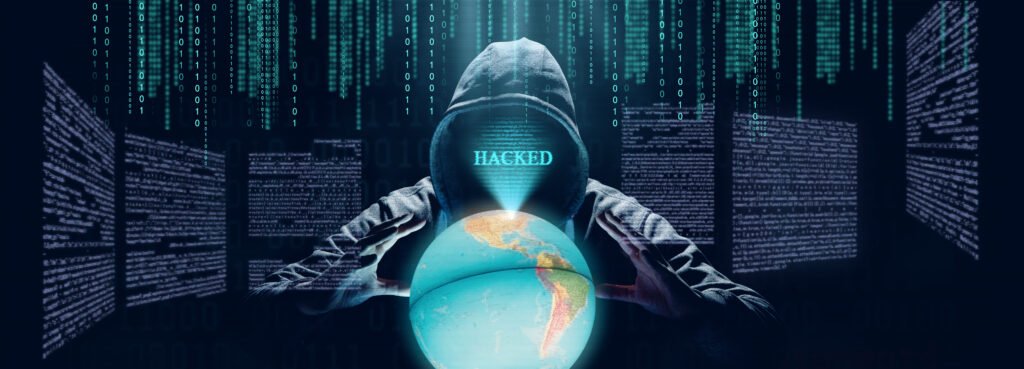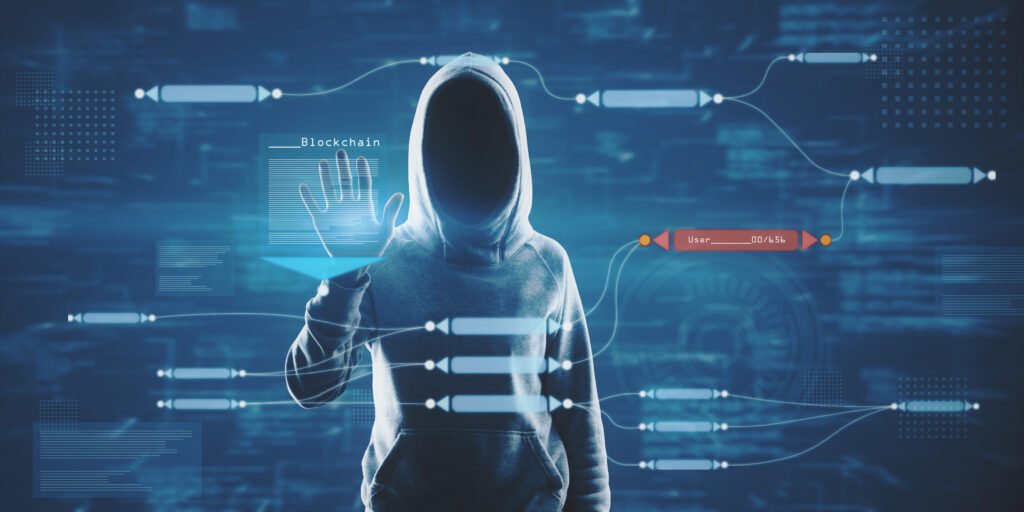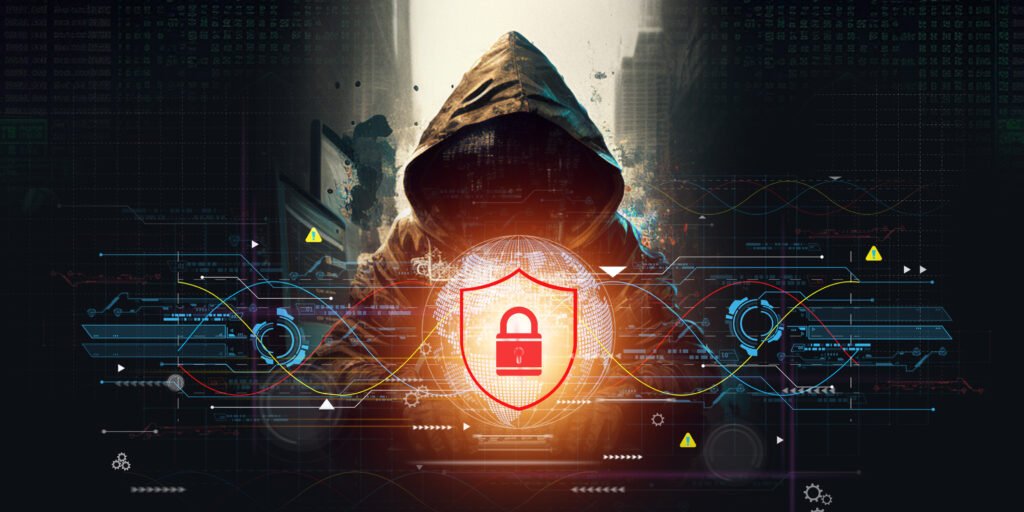The Rise of State-Sponsored New Cyberattacks Know It All

INTRODUCTION
The digital world has become a modern battlefield. As nations continue to strengthen their technological capabilities, the role of cyberattacks in global conflict has dramatically increased. Governments are now using cyber tools to spy, disrupt, and dominate, marking a new chapter in international power dynamics. The rise of state-sponsored cyberattacks is no longer theory—it is a proven and growing threat.This blog will explore how the rise of state-sponsored cyberattacks has reshaped global cybersecurity, what makes these threats unique, and how individuals and organizations can stay protected in this high-stakes digital environment.
Understanding State-Sponsored Cyberattacks
What Are State-Sponsored Attacks?
These attacks are often aimed at gaining political, economic, or military advantages. Unlike regular cybercriminals, state-sponsored attackers have access to massive resources, advanced technologies, and highly skilled teams.

Why Are They Dangerous?
They are highly targeted and stealthy.
They often go undetected for long periods.
They can disrupt critical infrastructure.
They are difficult to attribute and defend against.
The rise of state-sponsored threats signals that nations are now treating cyberspace as a domain of warfare—just like land, sea, air, and space.
Historical Evolution of State-Sponsored Cyberattacks
State-sponsored cyberattacks have evolved over the last two decades. What began as intelligence-gathering missions has now become a strategic tool for sabotage, political manipulation, and economic disruption.
Initial attacks targeted government secrets and classified information.
Over time, attacks shifted toward infrastructure, corporations, media, and even civilian data.
In recent years, election systems, financial institutions, and healthcare services have been common targets.
This evolution underscores the rise of state-sponsored attacks as one of the greatest cybersecurity challenges of the modern age.
Motivations Behind the Rise of State-Sponsored Cyberattacks
Political Espionage
Nations use cyber tools to spy on rival countries, intercept communications, and gain leverage in international negotiations.
Economic Sabotage
Competitor nations may use cyberattacks to steal intellectual property, disrupt markets, or undermine business operations.
Infrastructure Disruption
Critical services such as electricity, water, and transportation systems are now digital. A successful cyberattack can paralyze an entire region without firing a single shot.
Misinformation and Influence Campaigns
State-sponsored attacks are also aimed at spreading disinformation through social media to influence public opinion, elections, and political unrest.
Advanced cyber operations can be used to weaken enemy defenses or support kinetic military actions, showing that the digital battlefield is now as crucial as the physical one.
Common Techniques in State-Sponsored Attacks
Advanced Persistent Threats (APTs)
APTs involve long-term, stealthy intrusions into networks. These actors often dwell undetected for months or years, collecting data or setting the stage for a future attack.
Zero-Day Exploits
Nation-state actors have the resources to discover or purchase zero-day vulnerabilities—flaws unknown to software vendors—which can be exploited before any patch exists.
Supply Chain Attacks
Instead of attacking a target directly, attackers compromise a trusted third-party vendor or software provider, allowing the malware to spread silently.
Spear Phishing and Credential Theft
Highly personalized phishing emails trick employees into revealing login credentials or downloading malicious files.
Ransomware with Political Intent
Some state-sponsored groups use ransomware not for money, but to cripple operations, erode public trust, or force geopolitical messages.
High-Profile Cases of State-Sponsored Cyberattacks
Attacks on power grids that have caused blackouts and infrastructure damage.
Election system intrusions to disrupt democratic processes.
Coordinated misinformation campaigns affecting public perception.
Intellectual property theft from multinational corporations.
These incidents demonstrate the growing sophistication and boldness in the rise of state-sponsored cyberattacks.

Impact on Businesses and National Security
Economic Losses
State-backed cyberattacks cost companies billions in damages. From stolen trade secrets to disrupted operations, the financial toll is severe.
Reputational Damage
A successful cyberattack can damage an organization’s reputation, leading to a loss of customer trust and investor confidence.
Governments face threats to defense systems, intelligence networks, and emergency services. A breach in these sectors could have devastating national consequences.
Increased Insurance and Legal Liabilities
As attacks increase, organizations must spend more on cybersecurity insurance, legal counsel, and regulatory compliance.
Defending Against State-Sponsored Threats
Adopt a Zero Trust Architecture
Never assume trust within or outside the network. Implement strict identity verification and access controls at every layer.
Enhance Threat Detection and Response
Deploy advanced endpoint detection and response (EDR) tools, network monitoring, and threat intelligence platforms to detect threats early.
Secure the Supply Chain
Review and monitor third-party software, services, and vendors. Ensure proper vetting and regularly update software.
Conduct Regular Cybersecurity Training
Human error remains a major entry point. Educate employees on phishing attacks, secure password practices, and reporting suspicious activity.
Backup and Recovery Planning
Maintain offline, encrypted backups of all critical data and regularly test restoration processes.
Participate in Information Sharing Networks
Collaborate with government agencies and private cybersecurity forums to stay informed on emerging state-sponsored threats.
The Role of Artificial Intelligence in Modern Cyberwarfare
AI is a double-edged sword in cybersecurity. While defenders use AI to identify patterns and detect threats faster, state-backed attackers are also deploying AI to improve phishing, automate malware, and evade detection.
AI-powered deepfakes can impersonate leaders.
Machine learning can be used to craft personalized social engineering attacks.
Automated tools enable faster scanning for vulnerabilities across massive networks.
This escalating use of AI further fuels the rise of state-sponsored cyber threats.
The Future of State-Sponsored Cyberattacks
The future points to more advanced, stealthy, and impactful state-sponsored campaigns. As global digital interdependence grows, the scale of potential damage will expand as well.

Trends to Watch
Attacks on 5G and IoT infrastructure.
Weaponized AI and machine learning.
Cyberattacks targeting space satellites and undersea cables.
Quantum computing and the threat to traditional encryption.
Increased targeting of health, finance, and education sectors.
The rise of state-sponsored cyber threats will likely remain one of the top national and corporate concerns for the foreseeable future.
Deep Dive: Primary Nation-State Actors and Their Cyber Strategy
Examination of state-sponsored attack phenomenon entails examination of the cyber strategies employed by some of the most prolific nation-state cyber actors of the past few years. Different countries use cyber tools for different purposes depending on their political ambitions, internal tensions, and technical capabilities.
1. China
Target: Industrial sabotage, intellectual property theft, telecom infrastructure, surveillance technology.
Tactics: APT long-term penetration (e.g., APT41) into finance, health, and defense industries.
Objective: Economic domination and control of critical global supply chains.
2. Russia
Target: Geopolitical disruption, disinformation, infrastructure attack.
Tactics: Spear-phishing operations, critical infrastructure breaches (NotPetya), media manipulation.
Objective: Disrupt Western influence and destabilize democratic governments.
3. North Korea
Target: Financial gain from cybercrime to fund national interests.
Tactics: Ransomware, crypto heists, spear-phishing attacks on banks.
Objective: Bypass international sanctions and finance military projects.
4. Reverse in Iran
Objective: Retaliation against perceived enemies, regional destabilization.
Method of operation: Defacement of websites, wiping of data, DDoS attacks.
Objective: Signal digital power, counter political provocation.
Objective: Cyber protection, intelligence gathering, offensive deterrence operations.
Tactics: Targeted cyber attacks (e.g., Stuxnet), tracking networks, promoting multinational cyber norms.
Objective: Sustain global cybersecurity leadership and counter hostile threats.
The Role of Private Contractors and Hacktivists
While plenty of focus is on state-operated cyber units, most state-sponsored cyberattacks are carried out through intermediaries:
Cyber Mercenaries
States outsource or utilize loosely aligned hacking groups as tools for operations with plausible deniability. They are offered a “patriotic hacker” brand but are indirectly sponsored or blinded to by their governments.
Hacktivist Alliances
In current conflicts, governments may partner with activist groups who are already well-equipped with technical capability and infrastructure for influence. Such partnerships blur the distinctions between cyber warfare and cyber activism.
Economic and Political Impacts of State-Sponsored Attacks
Global Economic Impacts
Nation-state-conducted cyberattacks can cost billions of dollars in damages. Cyberattacks on sectors such as healthcare, finance, and transport have economic ripple effects on the global economy spreading to everything from productivity to share economy.
Political Impacts
When a nation is identified as the origin of a significant cyberattack, it can be threatened with:
Sanctions or trade bans.
Diplomatic reprisal and broken relations.
Retaliation cyber attacks and missile strikes.
More state-sponsored cyberattacks are therefore not merely a tech threat but a cross-cutting country risk that gets entangled with diplomacy, defense, and economics.
Legal Challenges in Attribution and Response
Attribution—demonstrating that a particular state perpetrated an attack—is one of the greatest challenges on the cyber battlefield. Without attribution:
Victims cannot justify retaliating.
Diplomatic responses are hard to seek.
Legal action against attackers is complicated.

Conclusion
As we proceed deeper into the digital era, the emergence of state-sponsored cyberattacks is no prediction—it is a reality of global cybersecurity. They are not merely about service disruption and loss of information; they areacts of cyber warfare designed to wreak havoc deliberately, covertly for most part but extremely contagious. Nation-state actors have grown increasingly stealthy and evasive, employing sophisticated tools, new methods, and vast resources to compromise everything from government and critical infrastructure networks to private companies and individual devices.
The effects of such intrusions go far beyond technical nuisance. They undermine national sovereignty, destabilize economies, sway public opinion, and undermine trust in digital systems. With increasing cyber activity embedded in geopolitics, every country, business, and individual becomes a player in this new battlefield.
Disclaimer
Although every effort has been made to verify that the information provided is accurate, threats to cybersecurity—most notably those concerning increased state-sponsored attacks—are dynamic and exist in a state of constant change. This material is not legal, strategic, or cybersecurity counsel.
Recent Posts
Categories
- Cyber Security
- Security Operations Center
- Cloud Security
- Case Study
- Technology Trends
Vulnerability Assessment & Penetration Testing (VAPT)
Buy our VAPT services to identify vulnerabilities, simulate real-world attacks, and strengthen your systems against cyber threats effectively.

iso compliance service
Buy our ISO Compliance services to streamline processes, ensure security, meet global standards, and maintain industry certifications with ease.

SOC 2 Compliance Audit
Ensure your business meets security, privacy, and compliance standards with our SOC 2 Compliance Audit services. Protect data, build trust, and stay secure. Buy our services today!

GDPR Compliance Audit Services
Ensure your organization meets GDPR standards with our expert compliance audit services. Protect data, avoid penalties, and enhance privacy practices. Buy our services today to stay secure and compliant!

Subscribe to our Research
Enter your email address to subscribe to Lumiverse Research and receive notifications of new posts by email.
Tell Us Your Opinion
We value your perspective! Share your thoughts, feedback, or questions below. Your opinion matters and helps create a richer, more engaging conversation. Let’s connect and hear what you think about this post!

